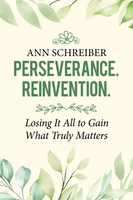
I’ve shared with you all in previous articles that one of my resolutions this year is to grow my network. Yes, look at my LinkedIn profile; you’ll see that I’m pretty well-networked already. But that doesn’t mean that meeting new people in new professions doesn’t hold value. It does!
Yet, I’ve noticed one thing in my recent networking interactions. As soon as I tell people that I am a content writer and copywriter, they almost inevitably ask how ChatGPT affects my work. They may ask quite directly—do you use ChatGPT? And the other one I received recently was—don’t you love ChatGPT?
And the truth is, I often let out a frustrated sigh. My most common answer is that ChatGPT has, in many ways, become the bane of my existence. Let me tell you why.
Using ChatGPT as a Copywriter? Here’s 4 Things You Need to Consider
I’ll be honest. I was a big naysayer when ChatGPT became big last year, especially when Ammaar Reshi used the app to write a children’s book. As someone who has been writing since I was young, I didn’t see myself with a need. And I avoided it for quite some time. But then I got curious.
As ChatGPT and how to use ChatGPT to make money kept coming up repeatedly in the news, Facebook conversations, and more, I wondered if I was missing out. So, I experimented a bit, and I even wrote an article about how AI could potentially change my approach to blogging. And I continued to avoid it for the most part. But as time passed and more and more people seemed to be finding success with it, I decided to try it. It didn’t take too long before I started picking up on these ChatGPTisms and overly-used terms.
I realized that the more I used it, the more I regretted it. The more and more I learned about how ChatGPT might NOT be the biggest gift to copywriters, especially when using it incorrectly. And though I could lament here and write thousands of words about my experiences, I’ll save you the time. Instead, I’ll issue you a few warnings, especially if you are a new copywriter using ChatGPT for your writing business.
1. Human First, ChatGPT Second
If you are set on using ChatGPT or other AI writing assistants, I implore you to write as a human first. Just as you should write for humans first and bots second when writing for SEO, the same applies here. Write as much of the article as possible, with your own words, without even opening up ChatGPT. Organize your articles, add links to internal and reputable external pages, and then assess your article. If you feel like something is missing, this is when you might consider turning to ChatGPT. The app can be a great way to develop fictional or illustrative examples to help you further explain a point.
This said, do not use ChatGPT just to help you reach a word count. If you’re coming up short on your goal, consider if the article was worth writing it all. Or reassess the goal. Maybe a shorter article will suffice. The goal should always be quality over quantity.
2. Be Up Front with Clients
If you will use ChatGPT when writing for your clients, be upfront with them. Most clients are totally okay with using AI to help with outlines and preliminary research. Some are even okay if you use ChatGPT to augment your writing. But you need to be careful here. If you will use ChatGPT and copy/paste any of the content from the tool into your deliverable, have it in writing that the client is okay with it.
Many clients will tell you upfront what is acceptable and what is not. When they do, heed and respect their request. But if it doesn’t come up, mention to the client how you will use the tool and get this in writing. I learned a big lesson here that cost me thousands of dollars. It’s a mistake I will never make again.
A telephone conversation is not an adequate way to get approval for using AI. If you talk about it on the phone, follow up in writing. Remember, your client is paying YOU to do the writing. So, if you use any special tools other than the standard ones for editing purposes (i.e., Grammarly), get it in writing. Trust me on this one.
3. Don’t Deliver Work that May Be 100% AI-Generated
While I use AI very little at this point in my client deliverables, I still run it through an AI checker before submission. My preferred tool is Originality.AI, but you can use whichever one you prefer. The key is to make that platform your version of the truth.
Different checkers can create different results, and you’ll end up with quite the headache writing and rewriting things (AI-free), only for it to come back saying there was a high probability that the content was AI-generated.
But here is the thing. Even if you never had ChatGPT open on your laptop, your content may come back with AI flags. And the most common culprits are certain words that AI seems to overuse. Avoid the following words and phrases in your writing: aesthetics, delve, durability, elevated (or any derivation of the word), harmonious, longevity, realm, superior, vibrant, etc. If you use these words in your own writing—stop. Come up with an alternative.
This said, if you run your work through an AI checker and it comes back with anything over 50% suggesting it is AI-written, make some edits. Start by checking for those words I mentioned above. Change them. Look for repetition where it is unnecessary. Remove it. Shorten your sentences. Make it more conversational. All these things will improve the human element of your content and make it more original.
4. Be Aware of the Legal and Ethical Implications
Using AI tools like ChatGPT to generate content can tread into complex legal and ethical territories, especially regarding copyright and authenticity. As a copywriter, you must understand that AI-generated text might inadvertently plagiarize existing content.
This can expose you and your clients to legal risks. The ethical implications of passing AI-generated content as entirely human-created without disclosure (like I shared above) can harm your reputation and trust with your audience and clients. Ensure your AI-assisted content complies with copyright laws and maintain transparency with your clients about the extent of AI involvement.
Obviously, the best way to ensure original content is to write it yourself. But, if you have to use CHATGPT, run your work through Copyscape and Grammarly’s Plagiarism Checker, correcting anything that comes up as flagged, before doing a final check via Originality.AI. This can give you added peace of mind that your content is human-written.
Long-Term Risks of Using ChatGPT
Any time you use a writing assistant, you take on risks. The truth is that we don’t know the long-term risks of using ChatGPT. Only time will tell. But the more human and authentic your writing is, the better it will be. Plus, we can’t grow our writing skills if we turn to the bots to take over. Taking on topics requiring you to get out of your comfort zone can make us stronger and smarter, allowing us to write across various niches.
Are you looking for a content writer who can help you bring more traffic to your website? That’s what I do! I’m Copywriting For You; Copywriting For Everybody.


